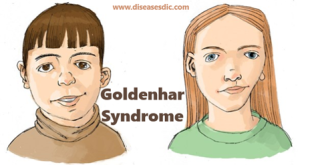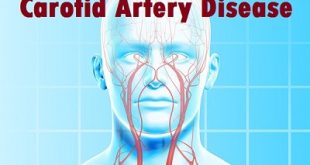Overview
Caudal Regression Syndrome (CRS) is a rare congenital disorder that primarily affects the development of the lower half of the body, including the lower spine and limbs. This condition occurs during fetal development when the caudal, or lower, part of the embryo fails to form properly. As a result, individuals with CRS may exhibit various abnormalities such as partial or complete absence of the tailbone (coccyx), malformation or absence of the lower vertebrae, and underdeveloped or missing lower limbs. The severity of the condition can vary widely, and additional complications may arise, affecting the genitourinary, gastrointestinal, and musculoskeletal systems. The exact cause of Caudal Regression Syndrome is not fully understood, but both genetic and environmental factors are believed to play a role in its occurrence.
The manifestations of CRS can range from mild to severe, impacting an individual’s mobility and overall quality of life. Treatment approaches are typically tailored to address the specific challenges faced by each patient and may involve surgical interventions to correct anatomical abnormalities, as well as supportive therapies to improve functionality and mobility. Early diagnosis and comprehensive medical management are crucial for individuals with Caudal Regression Syndrome to optimize their potential for independent living and enhance their overall well-being. While the condition poses significant challenges, ongoing research and medical advancements aim to improve our understanding of CRS and enhance treatment options for affected individuals.
Types of Caudal Regression Syndrome
It can manifest in various forms, and the severity of the condition can vary widely. The types of CRS are often classified based on the extent of malformation and the specific areas affected. Here are some common types:
- Caudal Agenesis or Aplasia: This is a severe form of CRS where there is a complete absence or severe underdevelopment of the lower spine and limbs. Individuals with this type may have a small or absent tailbone, and the lower limbs may be rudimentary or entirely absent.
- Partial Caudal Regression: In this type, there is partial underdevelopment of the lower spine and limbs. The severity can vary, and individuals may have some degree of lower limb involvement, ranging from minor abnormalities to more significant malformations.
- Sacral Agenesis: This subtype specifically involves the underdevelopment or absence of the sacral vertebrae, which are the bones at the base of the spine. Sacral agenesis can be associated with abnormalities in the tailbone and lower limbs.
- Caudal Duplication Syndrome: This is a rare variant where there is duplication of certain structures in the lower spine and pelvis. It can result in the presence of extra limbs or other duplicated features.
- Caudal Regression with Associated Anomalies: Some individuals with CRS may have additional congenital anomalies affecting other organ systems. These associated anomalies can involve the genitourinary, gastrointestinal, and musculoskeletal systems.
It’s important to note that the classification and terminology for CRS may vary, and healthcare professionals may further categorize cases based on the specific anatomical features and associated complications observed in individual patients.
Sacral agenesis classification
Epidemiology
Whilst the exact prevalence at birth is unknown, the incidence of caudal regression syndrome (CRS) is estimated between 1/20,000-100,000 pregnancies. Maternal diabetes is a major risk factor for developing CRS, and the disorder is up to 200-fold more frequent in this group of patients than in the general population.
Pathophysiology
The pathophysiology of CRS involves a disruption in the normal processes of gastrulation and neurulation, critical events that shape the embryonic tissues and form the neural tube. Gastrulation is the process by which the three primary germ layers (ectoderm, mesoderm, and endoderm) are established, while neurulation involves the formation of the neural tube, the precursor to the central nervous system. In CRS, the caudal part of the embryo, responsible for the development of the lower spine and limbs, fails to form properly. This results in a spectrum of abnormalities, ranging from partial underdevelopment to complete absence of the lower spine, sacrum, and limbs.
The pathophysiological manifestations of CRS often extend beyond the musculoskeletal system, affecting various organ systems. The malformations in the lower spine and spinal cord can lead to neurological deficits, impacting sensory and motor functions in the lower extremities. Additionally, abnormalities in the genitourinary and gastrointestinal systems may be present, further contributing to the complexity of the condition. While the specific genetic and environmental factors triggering these disruptions remain incompletely understood, the resulting anomalies in embryonic development give rise to the clinical features observed in individuals with CRS. Advances in genetic research and prenatal diagnostics continue to contribute to a deeper understanding of the underlying pathophysiology of this rare congenital syndrome.
Causes of Caudal Regression Syndrome
The causes of caudal regression syndrome are not yet well understood. Causes may be a mix of environmental and genetic factors. Some of the most common causes are believed to include:
- Genetics. It is thought that caudal regression syndrome is a genetic disorder.
- Mother’s health. Doctors believe that high blood sugar and metabolic imbalances affect the development of the fetus, especially if the mother’s diabetes is poorly managed. However, caudal regression can also happen when the mother doesn’t have diabetes. The connection between the two is still being studied.
- Developmental disturbances. If there are issues or trauma to the uterus around a month into the pregnancy, these events may disrupt the development of the baby’s skeletal, gastrointestinal, and urinary systems.
- Blood vessel abnormality. Some people believe caudal regression syndrome could be a result of reduced blood flow. It is thought that this blockage of crucial oxygen and nutrients brought to the fetus by blood could result in developmental issues.
- Embryonic abnormalities. The mesoderm is the middle of three tissue layers present in the early stages of the embryo (a developing baby in the earliest weeks of pregnancy). The mesoderm plays a massive role in the formation of many of the structures that are affected by caudal regression syndrome. Therefore, some scientists believe that caudal regression happens because there is a disturbance to the mesoderm.
Symptoms
Pediatric caudal regression syndrome affects the lower half of the body. Symptoms can range from mild to severe.
The condition can affect the development and function of the digestive tract, kidneys and urinary tract. Symptoms may include:
- Bladder nerves don’t send signals to the brain, causing the bladder to function abnormally
- Bladder comes out of an opening in the abdominal wall
- More tubes than necessary take urine from the kidneys to the bladder
- Lack of bladder or bowel control
- Frequent urinary tract infections
- Constipation
- Blocked anal opening
- Missing kidney, abnormally shaped kidneys or kidneys that join together, which can cause kidney failure
Caudal regression syndrome can also affect the development and function of reproductive organs. Symptoms may include:
- Undeveloped reproductive organs
- Undescended testes
- Opening of the urethra is on the underside of the penis
- Connection between the lower part of the large intestine (rectum) and the vagina causes bowel contents to leak out and pass through the vagina
Caudal regression syndrome also can affect other internal organs, including the:
- Heart
- Large intestine
Caudal regression syndrome can affect how bones develop. Symptoms may include:
- Breathing problems caused by an irregularly shaped chest
- Scoliosis, or curvature of the spine
- Small hip bones
- Flat, dimpled buttocks
- Vertebrae don’t completely close around the spinal cord, causing a fluid-filled sac to form
- Abnormally shaped or missing bones in the spinal cord and lower spine
- Less feeling in the lower half of the body
Caudal regression syndrome varies from patient to patient. Children with underdeveloped bones in their legs from sacral agenesis may stand differently. This can affect how they walk. Symptoms may include:
- Calcaneovalgus (feet turn out and up)
- Clubfeet (feet turn inward)
- Frog-leg position (legs bend with knees pointed out and feet in line with hips)
Complications of Caudal Regression Syndrome
It can give rise to a range of complications, and the specific challenges faced by individuals with CRS depend on the severity and extent of the malformations. Some common complications associated with CRS include:
- Orthopedic Issues: Individuals with CRS often experience orthopedic complications due to the underdevelopment or absence of the lower spine and limbs. This can lead to musculoskeletal abnormalities, joint contractures, and challenges with mobility.
- Genitourinary Anomalies: CRS can affect the development of the genitourinary system, leading to abnormalities in the kidneys, bladder, and reproductive organs. Conditions such as renal agenesis, urinary tract abnormalities, and genital malformations may be present.
- Gastrointestinal Abnormalities: Some individuals with CRS may have gastrointestinal complications, including abnormalities in the structure and function of the digestive system. This can result in issues such as anal atresia or imperforate anus.
- Neurological Issues: The malformations associated with CRS can impact the nerves in the lower part of the body. Neurological complications may contribute to sensory and motor deficits in the affected regions.
- Spinal Cord Abnormalities: As CRS involves underdevelopment of the lower spine, there may be associated spinal cord abnormalities. This can lead to neurological deficits and challenges in the transmission of nerve signals.
- Cardiovascular Anomalies: In some cases, individuals with CRS may have associated cardiovascular abnormalities, though this is less common. These anomalies may affect the heart and blood vessels.
- Respiratory Issues: Severe forms of CRS can affect the development of the chest and respiratory muscles, potentially leading to respiratory difficulties.
- Functional and Mobility Challenges: The musculoskeletal and neurological complications associated with CRS can result in functional limitations and challenges with mobility. Assistive devices and rehabilitation may be necessary to improve independence and quality of life.
Risk factors of Caudal Regression Syndrome
Here are some potential risk factors associated with CRS:
- Genetic Factors: There may be a genetic predisposition to CRS, as certain genetic abnormalities or mutations could contribute to the development of the condition.
- Maternal Diabetes: Pregnant women with diabetes, especially if the condition is not well-managed, may have an increased risk of having a child with CRS.
- Maternal Drug or Medication Exposure: Certain medications or drugs taken during pregnancy, especially those known to be teratogenic (causing birth defects), may be associated with an elevated risk of CRS.
- Environmental Factors: Exposure to certain environmental factors or toxins during pregnancy may contribute to the development of congenital abnormalities, including CRS.
- Folate Deficiency: Inadequate intake of folic acid (a type of B-vitamin) during pregnancy has been suggested as a potential risk factor for CRS. Folate is crucial for fetal development, and its deficiency has been associated with neural tube defects.
- Advanced Maternal Age: Older maternal age has been linked to a slightly increased risk of certain congenital anomalies, including CRS.
How to diagnosis caudal regression syndrome?
Diagnosing Caudal Regression Syndrome (CRS) involves a combination of prenatal and postnatal assessments, including medical imaging and clinical examinations. Here are the key steps in the diagnostic process:
Prenatal Screening
Ultrasound: During routine prenatal ultrasounds, anomalies in the development of the spine, lower limbs, and other affected structures may be detected. Anomalies suggestive of CRS can prompt further investigation.
Confirmatory Tests
Fetal Magnetic Resonance Imaging (MRI): In some cases, when ultrasound findings are inconclusive or when a more detailed assessment is needed, a fetal MRI may be performed to visualize the fetal anatomy in more detail, including the spine and associated structures.
Postnatal Evaluation
- Clinical Examination: After birth, a thorough physical examination is conducted to assess the baby’s overall health and to identify any physical abnormalities associated with CRS, such as the absence or malformation of the lower spine and limbs.
- Imaging Studies: X-rays, computed tomography (CT) scans, or magnetic resonance imaging (MRI) may be used to obtain detailed images of the spine, pelvic region, and lower limbs to confirm the diagnosis and assess the extent of malformation.
Genetic Testing
Chromosomal Analysis: Genetic testing, such as karyotyping, may be performed to rule out chromosomal abnormalities. While most cases of CRS are sporadic, genetic testing can help identify any underlying genetic factors.
Additional Assessments
Assessment of Associated Anomalies: Since CRS can be associated with abnormalities in other organ systems, additional medical assessments may be conducted to evaluate the genitourinary, gastrointestinal, and cardiovascular systems.
Consultation with Specialists
Multidisciplinary Approach: Given the complexity of CRS and its potential impact on various systems, a multidisciplinary team of healthcare professionals, including pediatricians, orthopedic surgeons, geneticists, and other specialists, may collaborate to provide comprehensive care.
Treatment
The treatment of Caudal Regression Syndrome (CRS) is typically individualized based on the specific challenges and complications faced by each affected individual. While there is no cure for CRS, various medical and surgical interventions may be considered to address specific aspects of the condition and improve overall quality of life. Here are some common treatment approaches:
Surgical Interventions
- Orthopedic Surgeries: Surgical procedures may be performed to address musculoskeletal abnormalities, correct joint deformities, or improve overall limb function.
- Spinal Surgeries: In cases where there are significant spinal abnormalities, surgical interventions may be considered to stabilize the spine or address specific issues related to spinal cord compression.
Genitourinary and Gastrointestinal Interventions
- Surgical Correction: If there are associated genitourinary or gastrointestinal anomalies, surgical procedures may be necessary to address these abnormalities and improve organ function.
Rehabilitation and Physical Therapy
- Physical and Occupational Therapy: Rehabilitation programs are essential to improve mobility, strength, and functionality. Physical and occupational therapists work with individuals with CRS to enhance their independence and quality of life.
Assistive Devices and Adaptive Equipment
- Mobility Aids: Depending on the severity of limb involvement, individuals with CRS may benefit from mobility aids such as braces, crutches, or wheelchairs to facilitate movement.
- Adaptive Equipment: Various adaptive devices and equipment may be recommended to assist with daily activities and promote independence.
Medical Monitoring and Management
- Monitoring for Associated Complications: Individuals with CRS may be at risk for associated complications such as urinary tract infections, respiratory issues, and orthopedic problems. Regular medical check-ups and monitoring help address these concerns proactively.
Supportive Care
- Psychosocial Support: Individuals with CRS and their families may benefit from psychosocial support, including counseling and support groups, to cope with the emotional and practical challenges associated with the condition.
Education and Developmental Support
- Educational Interventions: Children with CRS may require educational support to address any learning challenges related to their condition. Individualized education plans (IEPs) may be developed to meet their specific needs.
- Developmental Support: Early intervention programs and developmental support services can assist in optimizing the developmental progress of children with CRS.
It’s crucial for individuals with CRS to receive care from a multidisciplinary team of healthcare professionals, including pediatricians, orthopedic surgeons, physical therapists, and other specialists. The goal of treatment is to maximize functionality, enhance independence, and improve the overall quality of life for individuals with CRS. Each treatment plan is tailored to the specific needs of the individual, and ongoing medical monitoring is essential for managing potential complications.
Prevention of Caudal Regression Syndrome
It is a congenital condition, and in many cases, the exact cause is not well understood. As a result, it may not be possible to prevent CRS in all instances. However, there are some general recommendations that may help reduce the risk of certain congenital anomalies, including those associated with CRS:
Health Check-ups: Prior to conception, women should undergo preconception care to address any existing health conditions and ensure they are in optimal health.
Manage Chronic Conditions: If a woman has diabetes or other chronic conditions, proper management and control of these conditions before and during pregnancy are essential.
Early and Adequate Supplementation: Women of childbearing age, especially those planning to become pregnant, are advised to take folic acid supplements to reduce the risk of neural tube defects. Adequate folate intake is crucial during the early stages of pregnancy.
Avoidance of Harmful Substances: Pregnant women should avoid exposure to teratogenic substances, including certain medications, illicit drugs, and environmental toxins that could potentially contribute to congenital anomalies.
Family History Assessment: If there is a family history of congenital anomalies or genetic disorders, genetic counseling can provide valuable information about potential risks and options for managing those risks.
Early and Regular Check-ups: Early and consistent prenatal care is crucial for monitoring the health of both the mother and the developing fetus. Routine ultrasounds and screenings can help identify potential issues early in pregnancy.
Maintain a Healthy Lifestyle: Adopting a healthy lifestyle, including regular exercise, a balanced diet, and avoiding harmful habits such as smoking and excessive alcohol consumption, contributes to overall well-being during pregnancy.
Awareness of Risk Factors: Healthcare providers should educate women about potential risk factors associated with congenital anomalies and encourage them to make informed decisions about their health.
 Diseases Treatments Dictionary This is complete solution to read all diseases treatments Which covers Prevention, Causes, Symptoms, Medical Terms, Drugs, Prescription, Natural Remedies with cures and Treatments. Most of the common diseases were listed in names, split with categories.
Diseases Treatments Dictionary This is complete solution to read all diseases treatments Which covers Prevention, Causes, Symptoms, Medical Terms, Drugs, Prescription, Natural Remedies with cures and Treatments. Most of the common diseases were listed in names, split with categories.








what’s the main course of ulcers in general especially stomach